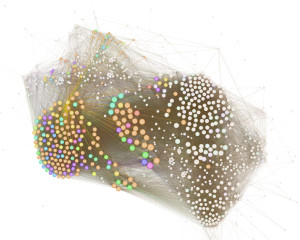
From the 1930s to the mid-1970s, income inequality in the U.S. was at historic lows while labor union membership was historically high. Although union density was not the only force equalizing incomes, the widespread presence of collective bargaining gave working people a kind of leverage they lack today. To understand what we have lost with the decline of unions, this project uses data from directories of labor and social movement leaders published in the first half of the 20th century to recreate the labor movement’s spatial, organizational, and personal networks.
The site includes visualizations of historic data sets, particularly the American Labor Who’s Who and the American Labor Press Directory (both 1925) and the 1946 Who’s Who in Labor. Linking this data to other publicly accessible resources holds the potential to connect more people to the history of social movements in North America.
These data projects also support critical pedagogy for undergraduate students. These days “Big Data” is more than a buzzword for quantification. It is also operates as an ideological assertion that data can, and inevitably will, replace human knowledge. Helping students understand the contemporary information ecosystem empowers them to use technology in ways that advance their own lives, and the well-being of the planet.
In addition to the data and visualizations hosted on the Networked Labor site, you might be interested in my reflections on teaching with Wikipedia and other Ideas for Digital Labor History. For access to the data, check my GitHub site.